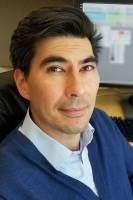
02 Oct Scientists Identify Factor That May Allow Skin to Heal Without Scarring
MedicalResearch.com Interview with:

Dr. Driskell
Ryan R. Driskell Ph.D.
Assistant Professor
School of Molecular Biosciences
Center for Reproductive Biology
Washington State University
Pullman, WA. 99164
MedicalResearch.com: What is the background for this study? What are the main findings?
Response: Scars a serious health concern when they cover large areas of the body. Understanding how to functionally regenerate skin can improve the quality of life for individuals with large scars.
Importantly, our study is proof of concept, in that we identified a genetic factor that allows adult skin to repair itself like the skin of a newborn babe. The discovery has implications for better skin wound treatment as well as preventing some of the aging process in skin.
MedicalResearch.com: What should readers take away from your report?
Response: Mammals are not known for their regenerative abilities compared to other organisms, such as salamanders that can regrow entire limbs and regenerate their skin. The WSU study suggests that the secret to human regeneration might be found by studying our own early development.
“We can still look to other organisms for inspiration, but we can also learn about regeneration by looking at ourselves,” said Driskell. “We do generate new tissue, once in our life, as we are growing.”
MedicalResearch.com: What recommendations do you have for future research as a result of this work?
Response: With the support from a new grant from the National Institutes of Health, the WSU research team will continue working to understand how Lef1 and other factors work to repair skin.
Citation:
Lef1 expression in fibroblasts maintains developmental potential in adult skin to regenerate wounds
Quan M Phan, Gracelyn M Fine, Lucia Salz, Gerardo G Herrera, Ben Wildman, Iwona M Driskell, Ryan R Driskell
as: eLife 2020;9:e60066 DOI: 10.7554/eLife.60066
[subscribe]
Last Modified: [last-modified]
The information on MedicalResearch.com is provided for educational purposes only, and is in no way intended to diagnose, cure, or treat any medical or other condition. Always seek the advice of your physician or other qualified health and ask your doctor any questions you may have regarding a medical condition. In addition to all other limitations and disclaimers in this agreement, service provider and its third party providers disclaim any liability or loss in connection with the content provided on this website.
Last Updated on October 2, 2020 by Marie Benz MD FAAD
